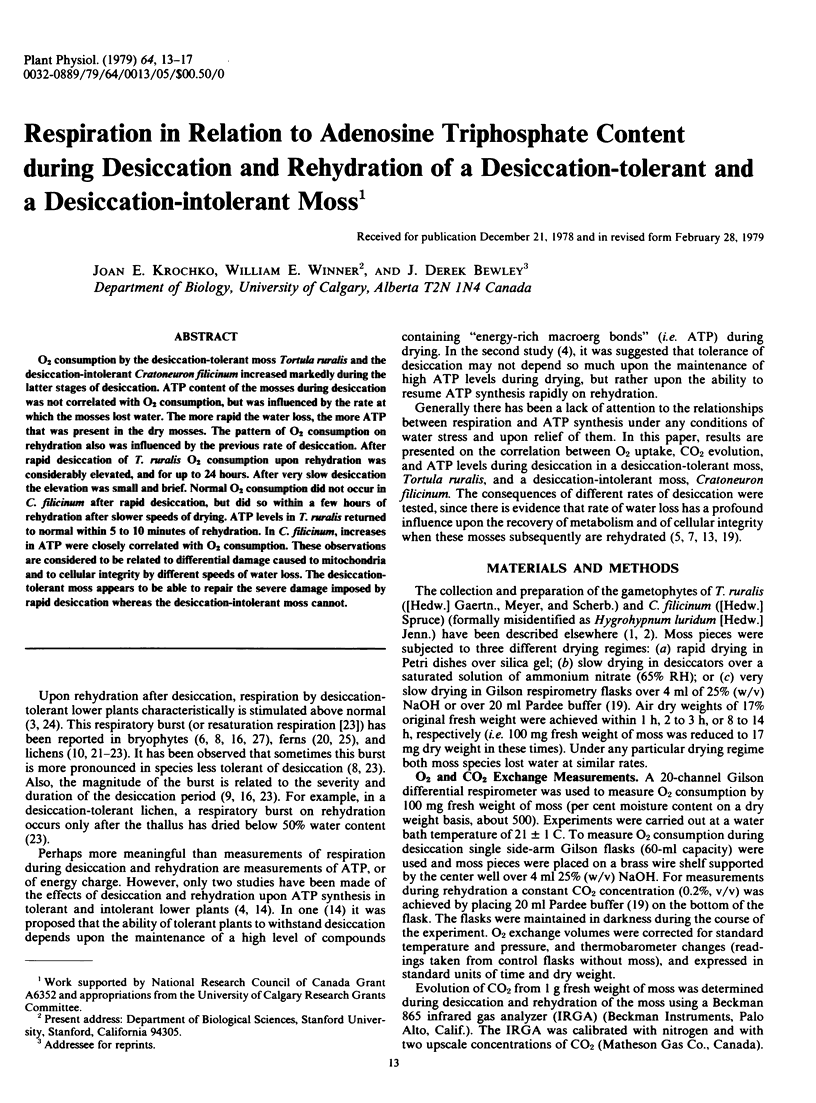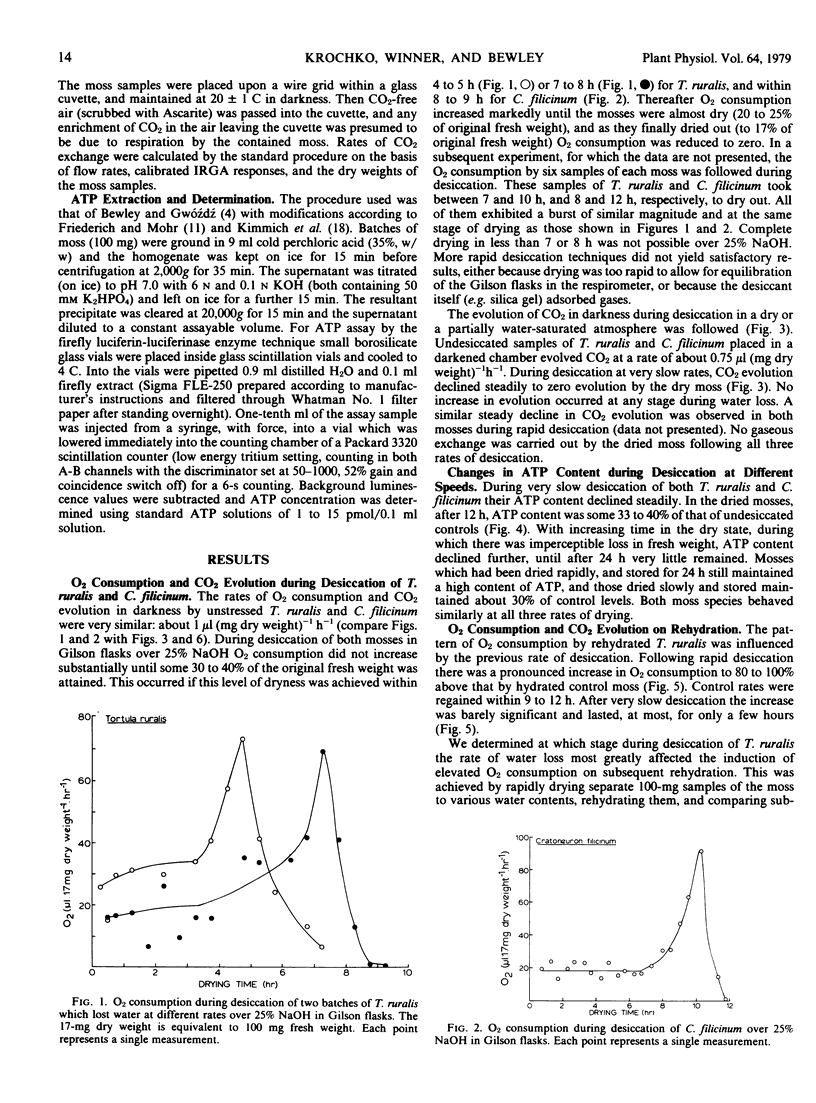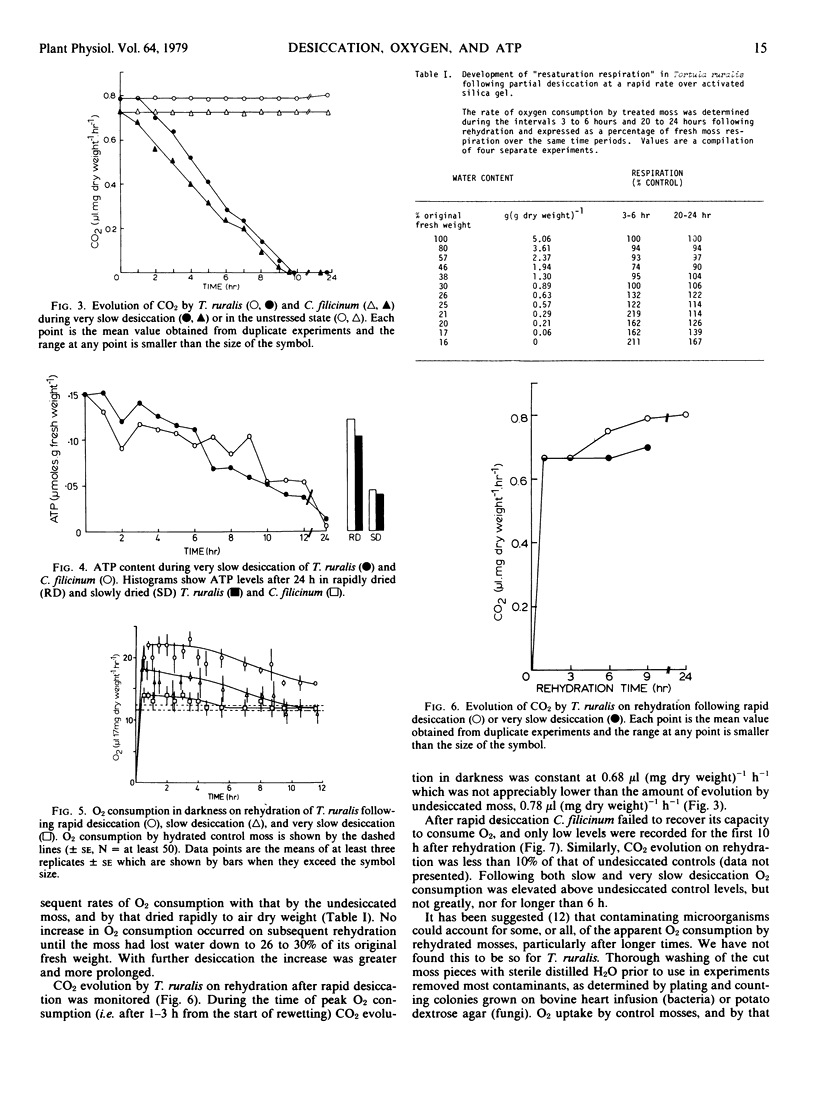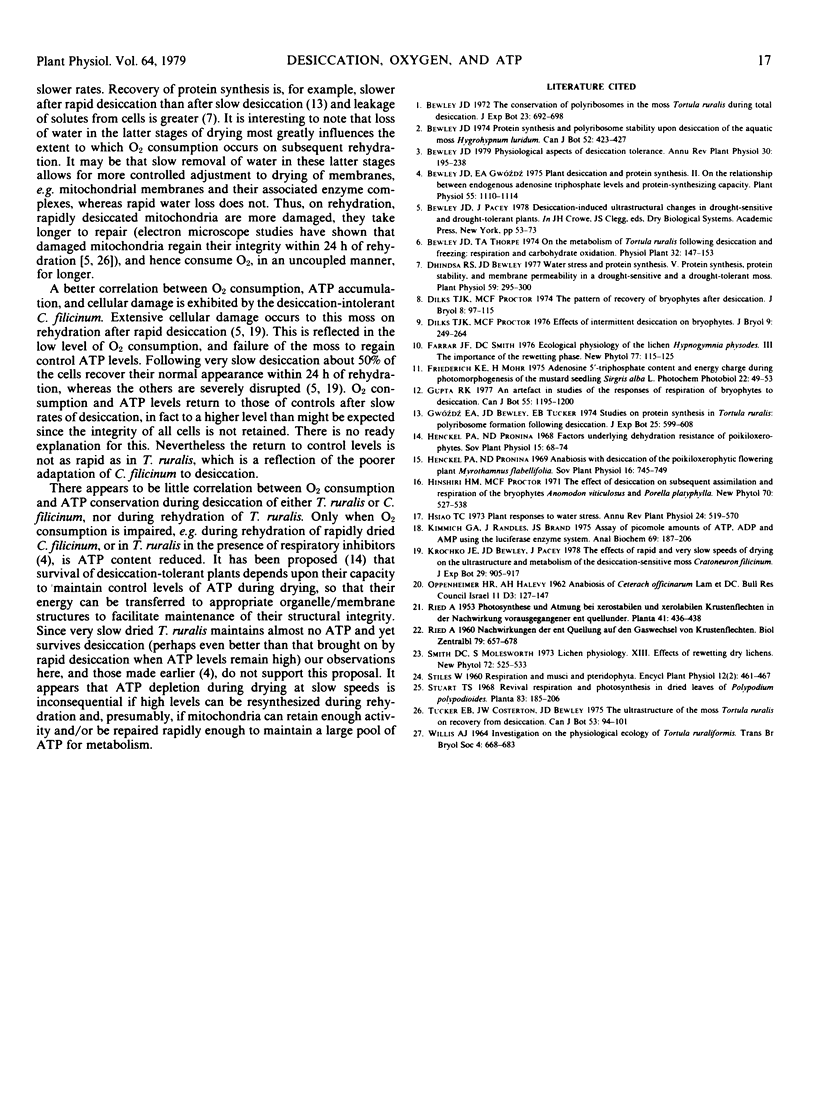Abstract
O2 consumption by the desiccation-tolerant moss Tortula ruralis and the desiccation-intolerant Cratoneuron filicinum increased markedly during the latter stages of desiccation. ATP content of the mosses during desiccation was not correlated with O2 consumption, but was influenced by the rate at which the mosses lost water. The more rapid the water loss, the more ATP that was present in the dry mosses. The pattern of O2 consumption on rehydration also was influenced by the previous rate of desiccation. After rapid desiccation of T. ruralis O2 consumption upon rehydration was considerably elevated, and for up to 24 hours. After very slow desiccation the elevation was small and brief. Normal O2 consumption did not occur in C. filicinum after rapid desiccation, but did so within a few hours of rehydration after slower speeds of drying. ATP levels in T. ruralis returned to normal within 5 to 10 minutes of rehydration. In C. filicinum, increases in ATP were closely correlated with O2 consumption. These observations are considered to be related to differential damage caused to mitochondria and to cellular integrity by different speeds of water loss. The desiccation-tolerant moss appears to be able to repair the severe damage imposed by rapid desiccation whereas the desiccation-intolerant moss cannot.
Full text
PDF




Selected References
These references are in PubMed. This may not be the complete list of references from this article.
- Bewley J. D., Gwódź E. A. Plant Desiccation and Protein Synthesis: II. On the Relationship between Endogenous Adenosine Triphosphate Levels and Protein-synthesizing Capacity. Plant Physiol. 1975 Jun;55(6):1110–1114. doi: 10.1104/pp.55.6.1110. [DOI] [PMC free article] [PubMed] [Google Scholar]
- Dhindsa R. S., Bewley J. D. Water Stress and Protein Synthesis: V. Protein Synthesis, Protein Stability, and Membrane Permeability in a Drought-sensitive and a Drought-tolerant Moss. Plant Physiol. 1977 Feb;59(2):295–300. doi: 10.1104/pp.59.2.295. [DOI] [PMC free article] [PubMed] [Google Scholar]
- Friederich K. E., Mohr H. Adenosine 5'-triphosphate content and energy charge during photomorphogenesis of the mustard seedling Sinapis alba L. Photochem Photobiol. 1975 Jul-Aug;22(1-2):49–53. doi: 10.1111/j.1751-1097.1975.tb06720.x. [DOI] [PubMed] [Google Scholar]
- Kimmich G. A., Randles J., Brand J. S. Assay of picomole amounts of ATP, ADP, and AMP using the luciferase enzyme system. Anal Biochem. 1975 Nov;69(1):187–206. doi: 10.1016/0003-2697(75)90580-1. [DOI] [PubMed] [Google Scholar]


